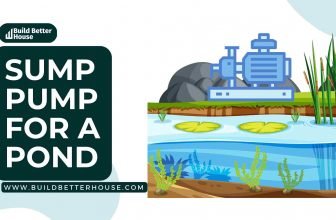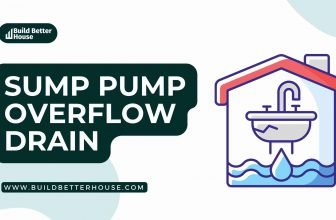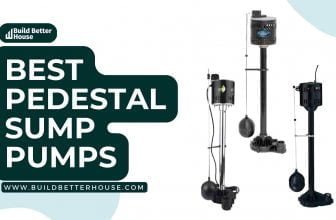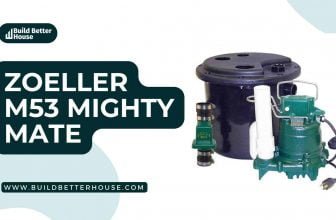Sprinkler Backflow Preventer Leaking: How To Fix?

A sprinkler backflow preventer is an essential piece of equipment for your home’s irrigation system. It prevents backflow from your system, which can lead to serious health problems. Unfortunately, these preventers can sometimes leak, which can cause severe damage to your home and yard. In this article, I will show you to fix the backflow preventer leaking.
If you suspect your sprinkler backflow preventer is leaking, it’s essential to take action quickly. You need to consult a professional for repair or replacement to protect your home and family. In this article, I will discuss the causes of sprinkler backflow preventer leaking and what you can do to prevent or repair them.
Why Is My Backflow Preventer Leaking?
A backflow preventer may not work properly if it is set up incorrectly. The water pressure may be too high, or debris might be blocked. If the backflow preventer has a leak or any other damage, it won’t be able to protect the water system.
Before taking any action, it is necessary to assess the female connection of the backflow preventer for any signs of damage.
Make sure to examine the connection to check for worn-out seals or damaged rubber and replace it to ensure that the backflow prevention device does not cause any leaks.
If the connection is insecure, water can get through, and you need to change the washer or grommet every 2-3 years or even sooner. However, there are many reasons for backflow preventer leaking:
Debris
Accumulated fragments in the plumbing can cause a backflow preventer leaking. The issue is due to debris if the leakage persists and never stops. Particles and fragments can become lodged within the valve to relieve pressure, preventing it from shutting correctly.
Water continuously flows out if the pressure relief valve fails to shut completely. Fortunately, if you remove any material blocking the pressure relief valve, it will allow the backflow preventer to close once more.
If the leakage continues, it indicates that something is blocking the pipes inside the system or there is another issue.
High Pressure
Increased water pressure in your irrigation system can lead to backflow and cause your backflow preventer to experience leakage. An elevation in force can prompt the pressure release valve on your backflow regulator to open.
If the water pressure is high, the liquid will escape from the pressure relief valve until the pressure reaches its proper amount.
Head Assembly
The head assembly is a crucial element of your backflow preventer, and incorrect installation can lead it to seeping. It is simple to place a head assembly incorrectly, and even slight errors can result in an uptick in pressure.
It is imperative to fit the timer before attaching the head assembly to avoid poor positioning and unequal pressure.
In addition, it is essential to carefully secure the head assembly and related components with your hands to avoid loosening or over-tightening them. If you don’t take care, you can end up altering the position of the head assembly in an unbalanced way.
If you choose to use a hose without activating the backflow preventer system, there is a chance that water may escape due to improper positioning of the head assembly.
Reasons For The Backflow Preventer Leaking
Here are common problems that cause a backflow preventer failure:
- Relief valve opening point too low – Generally, this happens by an obstruction that limits the motion of the stem of the relief valve.
- Faulty second check valve – Assessing a secondary check valve requires inspection for indications of reverse pressure. If the valve is not functioning correctly, water can bypass it and travel back into the region between the two check valves.
- Relief valve opening point too high – Regarding PSI, backflow preventers are made with different minimum pressure requirements. If you do not insert the disc on the relief valve correctly, the threshold at which it opens can be too high.
- Faulty first check valve – A decreased pressure backflow prevention device will have a first check valve that will activate when the water pressure reaches a specific pressure.
Generally, the valve will begin to operate once the water pressure reaches 2.0 PSI or above. If it is malfunctioning, it might start to operate at lower pressures, thus decreasing the efficiency of the whole mechanism.
Tips To Fix Sprinkler Backflow Preventer Leaking
The backflow valve is usually between the water supply link and the sprinkler system in your residence. This stops water from running in the opposite direction.
This will guarantee that your drinking water won’t get polluted with hazardous substances or garbage from the garden.
Backflow valves deteriorate over time due to the strain of daily use, and the seals around them can be prone to leakage. These issues are at the valve body and protective covering joint.
If you want to fix a problem with water leaks in your house, you will require new components to address the issue. This maintains the water pressure in your house. Here are some tips to assist you with the repair:
- Turn the main water supply off – Search for the key valve that controls your water system. After you find it, rotate the ball valve lever in a clockwise motion to the left.
- Remove the nut on the bell cover – Use a wrench to remove the nut from the cover. Nevertheless, be careful not to damage the nut while turning the wrench. You may observe rust on the nut due to long-term water leakage. You should remove the bell cover from the valve’s body to fix the issue.
- Inspect the valve interior – When inspecting the valve, you may spot a poppet and bonnet inside. Carefully remove these components within the valve itself, as they can have broken apart due to consistent water seepage.
If you can spot any components that are not in place, remove them from the interior before putting in the new parts. Next, you can attach a poppet to the valve and secure it with a bonnet.
- Put back the bell cover on – It is necessary to move the bell guard backward to the valve and ensure that it is even with the top. Ensure that the poppet and bonnet are in the correct position if the bell cover has been crooked before you secure it.
- Install the nut to the valve – Place the nut atop the bell cover and secure it manually into the valve. If conceivable, try to refrain from using hand tools like a wrench or pliers, which could harm the threads or nuts.
Manually adjust the base lever of the valve, so it remains aligned with the pipe you are connecting.
- Turn the water supply on – Once the instructions get completed, you can switch on the water supply to check if the system has been installed correctly. Afterward, the sprinkler is turned on, and you should monitor the backflow device.
Once you have executed the directions, it is secure to activate the water supply to examine the setup. After putting in the sprinkler system, it’s essential to get it operational and monitor the backflow apparatus. Make sure that there are not any seepages from the link points.
If you locate a fracture in your backflow valve body, replacing the whole valve is better than fixing the internal components. The break in the valve will let water out, leading to water contamination and unnecessary waste.
If your plumbing system is malfunctioning and causing water leakage, I recommend contacting an experienced plumber to solve the issue.
After taking the backflow preventer apart, you should see what component is causing the leakage issue.
Signs to Look For Backflow Preventer Leaking
Besides the clear-cut leakage from your backflow preventer, there are a few other indications that the unit may require maintenance. If the water is polluted, the signs might be:
- Water may be discolored, appearing brown, yellow, or pink
- Water has a bad taste
- Drains might be draining slowly
- Water flow might get interrupted or has slow movement
- Water has a bad sulphur odor
- Visible sediment or rust particles in the water
- The increased water level in some drains & decreased water level in others simultaneously.
Fixing Small Backflow Preventer Leaking
If a backflow valve is in place, it is normal to observe some water seeping out of the backflow preventer.
Generally, it takes a minimum of 5 minutes for the ball valve to shut off and for the pressure to build up in the lower system.
If the backflow prevention apparatus continues to leak after 5 minutes, it is necessary to modify the pipe or the pressure relief valve. The most common source of the problem is the presence of minute particles such as dirt, sand, or pebbles obstructing the valve and creating a leak.
Unclog the tubing and scrub the inner part of the valve with flowing water or a can of pressurized air if one is available. Avoid harming the swing or ball valve inside the backflow device or check valve.
Fixing Sprinkler Backflow Valve Leaks
Sprinkler systems are also likely to have a backflow valve, which sometimes leaks. Fortunately, this issue can be rectified similarly to fixing any other valve.
Shut the main water supply, clean the valve, and reattach it to the pipes. After the sprinkler system is fit, you need to test the system for at least 10 minutes to confirm that there is no further leakage.
Need A New Backflow Preventer?
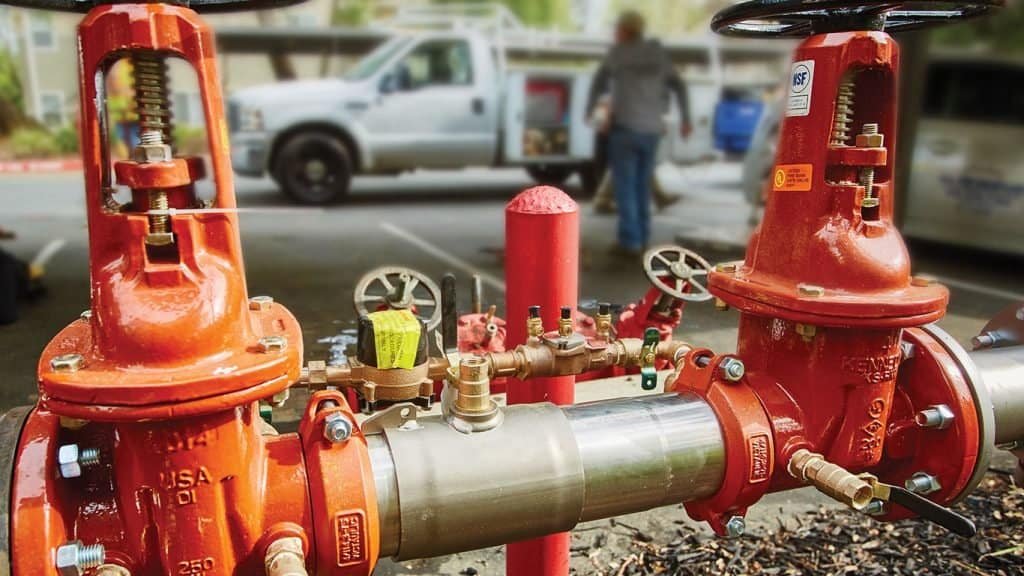
The Homewerks Worldwide VACBFPZ4B is my preferred backflow preventer. It is simple to set up and economical while still providing backflow prevention.
This backflow preventer prevents water backflow to the main water supply. It operates with a maximum temperature rating of 180º F/82º C and a maximum operating pressure rating of 125 Psi.
The thread outlet comes with a ¾ of an inch diameter that you can use with most standard hose and valve combinations, such as hose bibs, sillcocks, wall faucets, and garden hoses.
The preventer is corrosion-resistant and built with durable and reliable brass constructions.
FAQs (Frequently Asked Questions) On Sprinkler Backflow Preventer Leaking
Why is water coming out of my pressure vacuum breaker?
Pressure vacuum breakers may become leaky due to the lack of sealing tape or plumber’s putty deterioration in the necessary joints on either side of the breakers.
Can you repair a backflow preventer?
The goal of servicing a backflow preventer is to ensure it is functioning following its original manufacturer’s standards. It is only possible to determine if a repair is necessary by performing a field test on the assembly and analyzing the data to determine if the backflow prevention assembly needs fixing.
What is the life of backflow preventer?
The life of a backflow preventer is 5-10 years.
Why does backflow preventer spray water?
Backflow preventers permit water flow. If they don’t, they do not fulfill their purpose as vacuum breakers.
Summary: Sprinkler Backflow Preventer Leaking
The backflow valve is usually positioned between your home’s water supply line and the sprinkler system to prevent water from flowing backward. It will guarantee that your potable water is not contaminated with chemicals or debris from the yard. The backflow valve is usually the reason for backflow preventer leaking.
If your face backflow preventer leaking, take it out of service. Once you’ve removed it from the water supply, clean and inspect the components to ensure they aren’t damaged.
You should also check the relief valve to ensure it is free and debris-free. Next, run water through the system to evaluate any potential damage.
If all the components are in good condition and there are no structural issues, you can reinstall the backflow preventer and turn the water supply back on.
The best thing is to contact a local professional for further advice.
I hope this article on backflow preventer leaking sounds helpful!



